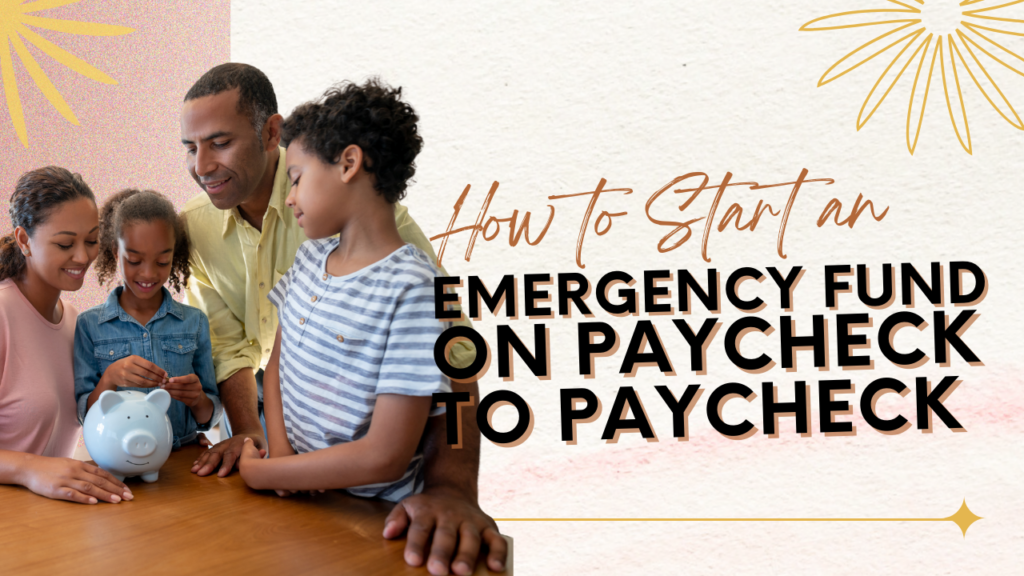Hey there, fellow moms! In the whirlwind of parenting, from school runs to meal preps and everything in between, it’s easy to let financial planning slip through the cracks. But, have you ever stopped to think about how a financial safety net could secure your family’s future?
Let’s dive into why it’s not just a wise move—it’s essential.
Peace of Mind in Unexpected Situations
First off, life is unpredictable. One day, everything’s running smoothly, and the next, you might face a medical emergency or sudden job loss. It’s stressful to imagine, but having a financial cushion can significantly reduce the anxiety associated with these uncertainties.
Think of it as your financial stress ball—always there to ease the pressure when life throws a curveball.
Empowerment Through Financial Independence
Creating a financial safety net also empowers us as individuals. It means you’re not just living paycheck to paycheck but are actively preparing for the long haul.
This independence is especially crucial for us moms, who often juggle careers and home life.
Knowing that you have resources set aside can give you the confidence to make choices that aren’t dictated by immediate financial constraints.
Ensuring a Smooth Ride for Big Life Events
Whether it’s buying a home, planning a family vacation, or preparing for your children’s education, big life events come with big price tags.
Saving up for these events means you can enjoy them without the burden of financial stress. It’s like packing an extra suitcase when you travel, filled with everything you might need—just in case!
Setting an Example for Your Kids
We’re the first role models our kids have, and they learn a lot by watching us (no pressure, right?). By prioritizing financial planning, you’re teaching your children the importance of saving and being prepared.
This can help them develop healthy financial habits early on, setting them up for their own secure future.
Long-Term Security into Retirement
Lastly, while retirement might seem a long way off, starting early is the key to a comfy retirement phase. A robust financial safety net allows you to look forward to your golden years with excitement rather than worry.
Imagine it as planning an extended, well-deserved vacation after decades of hard work!
According to QikTruck, “Creating a financial safety net is not always easy. It requires budgeting, saving, and smart investments of the money one earns. The key is to start slowly and develop the habit of budgeting, saving, and investing. It helps to be patient and remain aware of one’s financial goals.”
How to Create a Family Financial Plan
Starting to build a financial safety net might seem daunting, especially with all the other responsibilities we juggle every day. But with a bit of planning and some smart strategies, you can begin to weave a safety net that brings real security.
According to Investopedia, “Working off of a plan provides purpose and allows families to do the things they want to do and explore options they previously may not have had access to, such as owning a home or starting a family business.”

Here are some step-by-step tips to help you get started:
1. Evaluate Your Financial Situation
The first step is understanding where you stand financially. Gather all your financial statements—bank accounts, investments, loans, and monthly bills—and take a hard look at what’s coming in and what’s going out.
This will help you see the big picture and identify areas where you can cut back or need to focus more on saving.
2. Set Clear Financial Goals
What are you saving for? Whether it’s an emergency fund that covers six months of living expenses, retirement, your kids’ education, or all of the above, clear goals will help you stay focused and motivated.
Make your goals SMART:
- Specific
- Measurable
- Achievable
- Relevant
- Time-bound
This approach makes it easier to track your progress and adjust as needed.
3. Create a Budget and Stick to It
A budget is your roadmap for building savings. It tells you how much you can realistically set aside each month after covering your essential expenses. There are plenty of budgeting methods out there, from the envelope system to digital apps that link to your bank account.
Pick one that fits your lifestyle and stick to it, making adjustments as your financial situation changes.
4. Build an Emergency Fund
An emergency fund is a cornerstone of any financial safety net.
Start by aiming to save $1,000, then work up to three to six months’ worth of living expenses. Keep this money in a separate savings account to avoid the temptation to dip into it for non-emergencies.
Remember, this fund is there to help you avoid going into debt when unexpected costs pop up.
5. Pay Down High-Interest Debt
High-interest debt, like credit card balances, can quickly undermine your financial security.
Prioritize paying off these debts by focusing on the highest interest rates first or the smallest balances to gain momentum (a strategy known as the debt snowball method).
Reducing these debts frees up more of your income for savings and investments.
6. Consider Insurance and Long-term Investments
As we discussed, insurance is a key component of a financial safety net.
Additionally, think about long-term investments such as retirement accounts (like a 401(k) or IRA). These not only help you save for the future but can also provide tax advantages.
7. Regularly Review and Adjust Your Financial Plan
Your financial situation will change over time—a new job, new baby, new house—and so should your financial plan.
Check in on your finances regularly, at least once a year, to make sure your savings are on track and adjust your budget and goals as necessary.
8. Educate Yourself About Finances
The more you know, the better decisions you’ll make.
- Read books
- Follow financial blogs
- Attend workshops
- Consider talking to a financial advisor

Continuous learning will help you feel more confident in your financial decisions and better equipped to handle the challenges and opportunities that come your way.
By taking these steps, you can start to build a financial safety net that not only protects but also empowers your family’s future. Remember, every small step you take today is a building block for your family’s security tomorrow.
How Life Insurance Can Serve as a Financial Safety Net for Your Family’s Future
Adding life insurance to your financial plan might not be the first thing you think of when you hear “financial safety net,” but it’s one of the most straightforward ways to ensure your family’s financial stability, no matter what happens.
It’s Like a Financial Guardian Angel for Your Family
Think of life insurance as your family’s financial guardian angel. It’s there to look out for your loved ones if you can’t be there to do it yourself.
In the event of an untimely departure, having life insurance means your family will have financial support to help cover everything from daily living expenses to future dreams like college or home ownership.
Covering Debts and Ongoing Living Expenses
Life insurance can help manage debts that might otherwise be overwhelming for your family. This includes mortgages, car loans, and credit card debts, ensuring these don’t become burdensome.
Plus, it can provide a steady stream of income to cover ongoing expenses like groceries and utility bills, helping your family maintain their standard of living.
According to TPD Wealth Management, “Life insurance payouts can help replace lost income, offering financial stability to your family and helping to maintain their current lifestyle in the event of your passing.”
Funding Future Milestones
One of the most heartfelt aspects of life insurance is its role in securing the dreams you have for your children’s futures. Whether it’s higher education, starting a business, or even a wedding, life insurance can ensure these plans don’t falter.
It’s comforting to know that your hopes for your children’s milestones can still be realized, even if you’re not there to see them happen.
Peace of Mind with Estate Planning
Life insurance can also be pivotal in estate planning. It can provide the funds needed to settle estate taxes and other associated costs without the need to liquidate other assets. This strategic use of life insurance ensures that you can pass on your assets to your heirs rather than to tax collectors.
Flexible Options to Suit Your Needs
The beauty of life insurance is its flexibility. Whether you choose a term policy, which covers you for a specified period, or a whole life policy, which offers coverage plus a savings component, there’s a type that fits your family’s needs and your budget.
Many policies also offer riders like critical illness or disability cover, adding another layer to your financial safety net.
To Wrap Up
Creating a financial safety net doesn’t have to be overwhelming. By taking small, manageable steps, you can build a secure financial future for your family. So, let’s roll up our sleeves and get to it—because our family’s future is worth every penny!
Here’s to making smart financial choices together!



